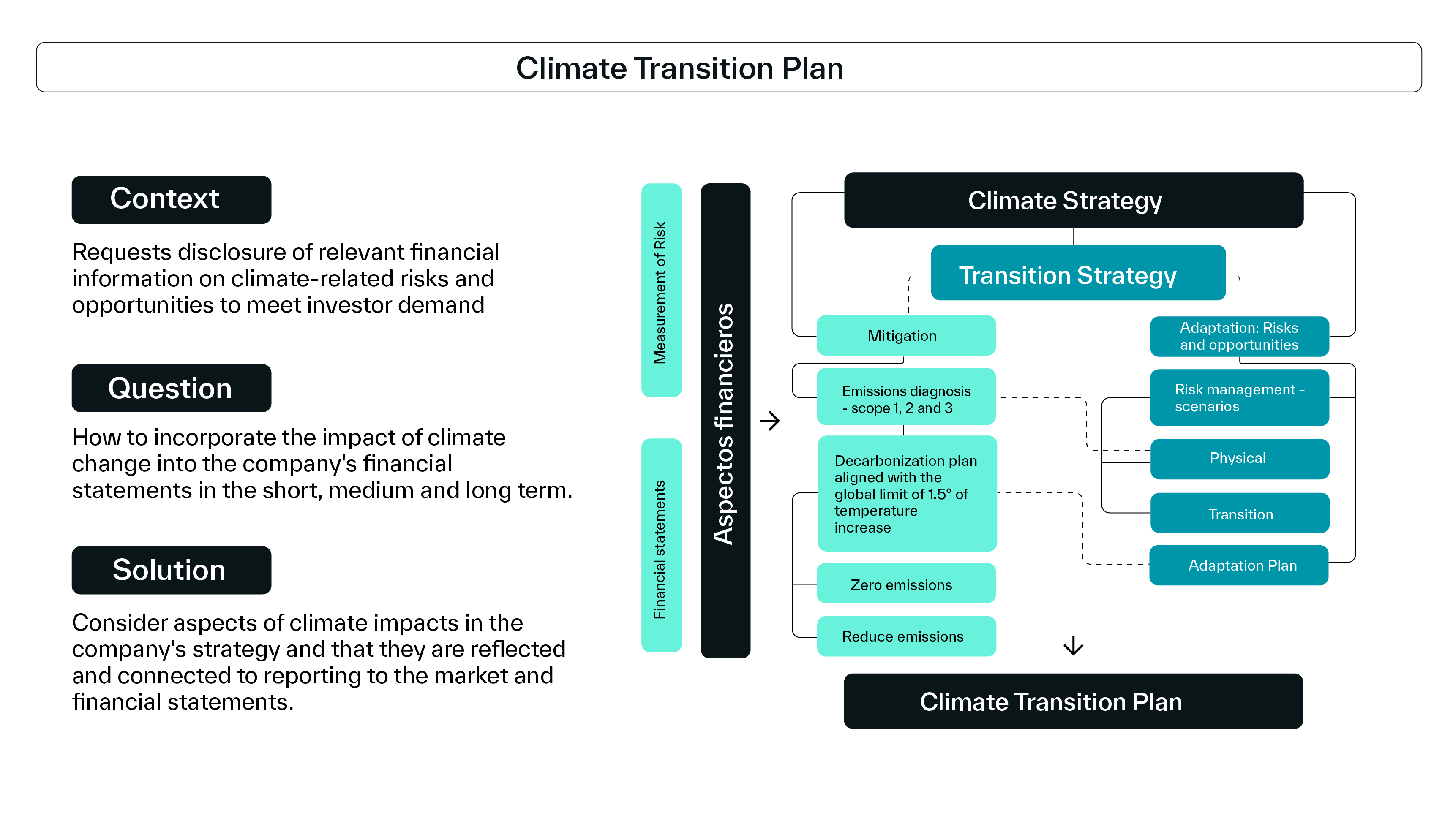The strategic role of climate transition plans

With the average global temperature rising faster than predicted by climate models, science is reinforcing the warning that the world needs to make an urgent transition to a low-carbon economy, adapted to the extreme weather events that are already occurring. This requires a transformation in business and finance. This is why organizations need to develop a climate transition plan.
One of the initiatives in this direction is the Transition Plan Taskforce (TPT), launched in April 2022. The TPT aims to establish a gold standard framework for transition plans, with the involvement of financial institutions, real economy companies, policymakers, regulators and civil society. In 2024, the IFRS Foundation took over responsibility for TPT’s outreach materials, which represented an important step towards disseminating the initiative in a standardized manner globally.
Guidelines for a climate transition plan
The guidelines for a transition plan should include actions structured into decarbonization components, a response to risks and opportunities, a contribution to the transition, as well as funding possibilities for strategic actions. See the figure below:

Building a robust transition plan is essential for companies to demonstrate to stakeholders that there is a strategy for business continuity in such a dynamic scenario. It is worth noting that in addition to development, it is important to use the plan in an integrated manner, placing the issue at the center of corporate decision-making. “In addition to contributing to tackling climate change, another benefit of carrying out this work is positioning the company as a leader in the agenda, which can generate a competitive advantage,” explains Melina Amoni, Climate Risk and Adaptation Manager at WayCarbon.
References
https://transitiontaskforce.net/wp-content/uploads/2023/10/TPT_Disclosure-framework-2023.pdf
Contact our experts to develop your company’s climate transition plan effectively and safely.

 EN
EN  ES
ES PT
PT



